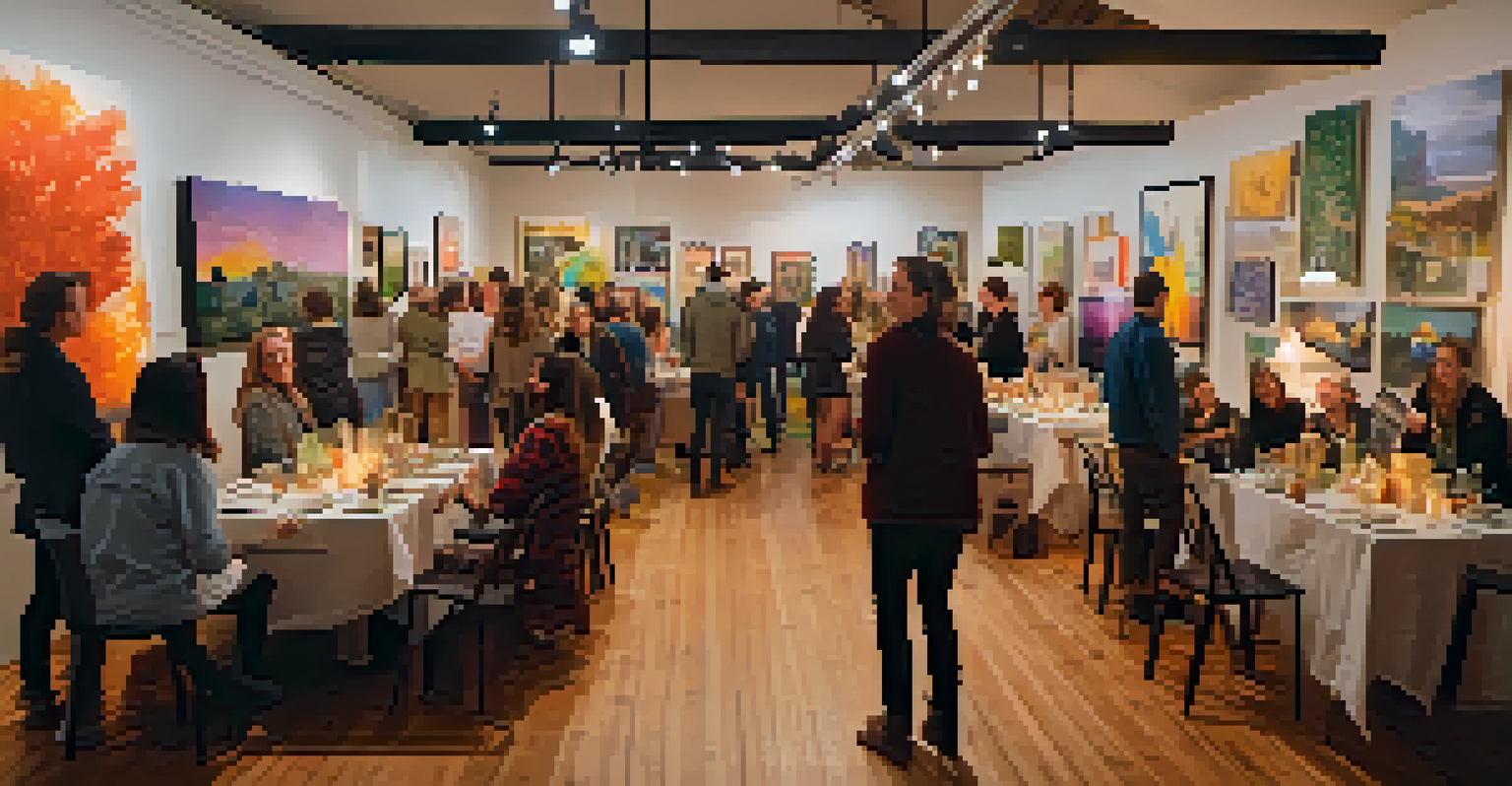The Evolution of Art Collecting: Past, Present, and Future

The Origins of Art Collecting in Ancient Civilizations
Art collecting dates back to ancient civilizations, where the wealthy would acquire pieces to showcase their status. From the Egyptians collecting sculptures to the Greeks who cherished pottery, these early collections reflected cultural values and power dynamics. This practice laid the groundwork for the appreciation of art as a form of investment, not just decoration.
Art is not what you see, but what you make others see.
As time progressed, the Renaissance sparked a newfound interest in art, encouraging patrons to amass works from emerging artists. This era saw the birth of the modern collector, with individuals like the Medici family promoting and collecting art as a display of intellect and sophistication. Their influence helped shape the art market, making collecting a noble pursuit.
Thus, the roots of art collecting are intertwined with societal values, personal expression, and the desire for legacy. Understanding this history is crucial as we explore how art collecting has transformed and continues to evolve.
The Rise of Private Collectors in the 18th and 19th Centuries
The 18th and 19th centuries marked a significant shift in art collecting, with private collectors gaining prominence. Wealthy industrialists and aristocrats began to curate their collections, often commissioning works from renowned artists. This period saw the establishment of art galleries, which provided a platform for collectors to showcase their treasures to the public.

During this time, the idea of the 'art museum' began to take shape, as collectors recognized the value of sharing their collections with a wider audience. Institutions like the Louvre and the British Museum emerged, highlighting the transition from private to public appreciation of art. This democratization allowed more people to engage with art, sparking a cultural shift.
Art Collecting's Ancient Roots
Art collecting began in ancient civilizations as a display of wealth and status, evolving into an appreciation for art as an investment.
As a result, art collecting evolved from a solitary pursuit to a communal experience, laying the foundation for the modern art world we know today. This transition highlights the lasting impact of collectors on public access to art and cultural heritage.
The Impact of the 20th Century on Art Collecting
The 20th century brought radical changes to the art world, influenced by movements like Modernism and Postmodernism. Collectors began to seek out avant-garde works that challenged traditional aesthetics, embracing experimental styles and new mediums. This shift not only expanded the definition of art but also the types of pieces collectors pursued.
The best artist has no conception that a marble block does not contain within itself, but rather what the artist sees within it.
In addition, the rise of art fairs and auctions revolutionized how art was bought and sold. Events like Art Basel and Sotheby's auctions became hotspots for collectors, providing access to high-profile works and establishing market trends. This commercialization of art collecting changed the landscape, making it a lucrative investment opportunity.
Consequently, the role of collectors morphed from simple enthusiasts to influential players in the art market. Their choices could dictate trends, prices, and even the careers of emerging artists, reinforcing the interconnectedness of art and commerce.
The Digital Revolution and Its Influence on Collecting
With the advent of the internet, art collecting entered a new era. Online platforms and social media allowed collectors to discover, purchase, and share art from anywhere in the world. This accessibility not only democratized art collecting but also opened doors for emerging artists who could showcase their work to a global audience.
Digital galleries and virtual exhibitions began to emerge, offering innovative ways for collectors to engage with art. The use of technology has transformed traditional practices, allowing for more diverse and inclusive representation in the art world. As a result, collectors are now more informed and connected than ever before.
Impact of the 20th Century
The 20th century revolutionized art collecting with the rise of avant-garde movements and auction events, transforming collectors into influential market players.
However, this digital landscape also presents challenges, such as the risk of art fraud and the saturation of the market. Collectors must navigate these complexities, balancing the benefits of accessibility with the need for authenticity and quality in their collections.
The Rise of NFTs and Digital Art Collecting
Non-fungible tokens (NFTs) have emerged as a groundbreaking development in the art world, introducing a new form of digital collecting. NFTs allow artists to tokenize their work, providing proof of ownership and authenticity in a digital realm. This innovation has attracted a new generation of collectors, eager to invest in digital art that challenges traditional notions of value.
The NFT market has exploded, with high-profile sales and collaborations capturing global attention. Artists and collectors alike are exploring this new frontier, leading to discussions about the future of art and the role of technology in shaping it. As digital art becomes more mainstream, collectors must adapt their strategies to navigate this evolving landscape.
This shift raises questions about the future of collecting, as digital assets blur the lines between physical and virtual art. Collectors will need to consider how to curate their collections in a world where art exists in various formats, each with its own implications for ownership and value.
The Future of Art Collecting: Trends and Predictions
As we look to the future, art collecting is poised to embrace even more innovation. Trends such as sustainable art practices and diversity in representation are gaining traction, encouraging collectors to consider the ethical implications of their acquisitions. This shift reflects a broader cultural movement towards accountability and awareness in all areas of life.
Moreover, advancements in technology will continue to shape the art market. Augmented reality (AR) and virtual reality (VR) are expected to enhance the collecting experience, allowing collectors to visualize how artworks would look in their spaces before purchasing. This immersive approach could revolutionize how people interact with art.
Community's Role in Collecting
Modern art collecting emphasizes community and collaboration, encouraging collectors to support local artists and initiatives for a vibrant art scene.
Ultimately, the future of art collecting will be defined by a blend of tradition and innovation. Collectors will need to stay informed and adaptable, embracing new ideas while honoring the rich history of art and its impact on society.
The Role of Community in Modern Art Collecting
Community has become an integral aspect of art collecting in recent years, as collectors seek connection and collaboration. Art collectives and cooperative galleries have emerged, fostering environments where artists and collectors can work together. This shift emphasizes the importance of relationships and shared values in the art ecosystem.
Collectors are increasingly recognizing the value of supporting local artists and initiatives, contributing to a more vibrant and diverse art scene. By engaging with their communities, collectors can help create opportunities for emerging talent while enriching their own collections. This communal approach promotes a sense of belonging and shared purpose.

As art collecting evolves, the role of community will only grow in significance. Collectors will continue to seek out ways to connect, collaborate, and contribute, ensuring that art remains a vital part of our shared cultural narrative.